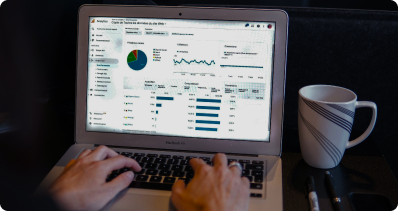Navigate
Data Analytics Tutorial for Beginners
Data Science Tutorial for Beginners
Statistics Tutorial for Beginners
Power BI Tutorial
Excel Tutorial for Beginners
Tableau Tutorial
Understanding Data
Data is information collected for reference or analysis. It can be numbers, words, measurements, observations, or even just descriptions of things. In data analytics, data is typically collected, processed, and analysed to extract meaningful insights.
Types of Data
Structured Data
Organised and easily searchable, such as databases or spreadsheets. Structured data is often stored in rows and columns, making it straightforward to analyse. Examples include sales records, customer information, and inventory levels.
Unstructured Data
Not organised in a predefined manner, making it more challenging to analyse. Examples include emails, social media posts, images, videos, and text documents. Analysing unstructured data often requires more advanced techniques and tools.
Data Sources
Primary Data
Collected directly from the source by you or your team. Examples include surveys, interviews, and experiments. Primary data is often more accurate and specific to your needs.
Secondary Data
Collected by someone else and used by you. Examples include research papers, industry reports, and data from government agencies. Secondary data is often easier to obtain but may not be as specific or current.
Accuracy
The correctness of data. Accurate data accurately represents the real-world scenario it describes.
Completeness
The extent to which all necessary data is included. Complete data ensures no critical information is missing.
Consistency
Data is the same across different datasets or systems. Consistent data ensures that information matches across various sources.
Timeliness
Data is up-to-date. Timely data ensures that the information is relevant to the current context.
Consider a school collecting student performance data. Structured data might be the grades in each subject, while unstructured data could be comments from teachers.
List three examples of structured data and three examples of unstructured data you encounter in your daily life.
Quiz
1. What is qualitative data?
- a) Data in the form of numbers
- b) Data in the form of text, images, or descriptions
- c) Data that has been cleaned
- d) Data that has been visualized
2. Which of the following is an example of quantitative data?
- a) Customer feedback
- b) Product ratings
- c) Customer emails
- d) Employee names
3. True or False: Structured data is organized and easily searchable.
- a) True
- b) False
4. What type of data is stored in spreadsheets and databases?
- a) Unstructured data
- b) Semi-structured data
- c) Structured data
- d) Qualitative data
5. Which method is used to handle missing data in a dataset?
- a) Ignoring it
- b) Filling it with the mean or median
- c) Deleting the entire dataset
- d) Changing it to text
Unlock Expert Career Advice For Free





